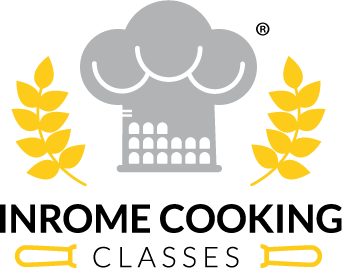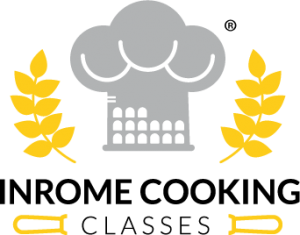Most of the Vatican’s visitors make a beeline for the Sistine Chapel. And when you see it for yourself, alone, without the crowds, it’s easy to see why. Michelangelo’s masterful frescoes certainly deserve the attention they get. But because they’re a household name, they unfairly overshadow the Raphael Rooms, which boast extraordinary – perhaps even better – Renaissance frescoes of their own.
The Raphael Rooms are among the most beautiful attractions in the Vatican. Painted by Raphael, one of the triumvirate of Renaissance Greats (the others being Michelangelo and Leonardo), the frescoed of these rooms once were once part of the private residence of Pope Julius II (1503 – 1513).
Pope Julius had no intention of living in the accommodation of his predecessor, Alexander VI. So just a few months after commissioning a certain Michelangelo to paint the ceiling of the Sistine Chapel, he established his apartment the floor above, commissioning a little-known 25-year-old artist, Raphael Sanzio, to adorn its walls. As you’ll see below, Raphael did not dissapoint.
History
Four separate halls make up the Raphael Rooms. You can see them below in chronological order. A fair amount of controversy surrounded Raphael's painting of them. Rather than starting from scratch, the young artist had to paint over existing frescoes. And this he did - whitewashing the works of Castagno, Piero della Francesca, Peruzzi, and even his own tutor Perugino, to name just a few.
Room of the Segnatura and the School of Athens

The stanza della segnatura was the first room Raphael painted. Executed between 1508 and 1511, the room takes its name from the function for which it was used. For as the pope's library, it was here that he would sign official acts and documents. Raphael's rich visual theme merges the classical and biblical world, dealing with themes of theology, philosophy, and jurisprudence.
One of the room's most magnificent frescoes is the Disputation of the Sacrament. The scene represents an image of the church, spanning both heaven and earth and crowded with recognizable figures. Christ sits at the center, flanked by John the Baptist to his right and the Virgin Mary to the left. Another immediately noticeable figure, dressed in his traditional red robes is Dante Alghieri, the author of the Inferno and the father of today's Italian language.

The most famous fresco in the Room of the Segnatura is the School of Athens, an artwork depicting the most influential philosophers of antiquity. The fresco's subject is philosophy. At the center stand Plato and Aristotle surrounded by key thinkers from other ages - Zoroaster, Ptolemy, and Raphael as Apelles. It's interesting to note the directions in which Plato and Aristotle are pointing - the first up towards the heavens; the second down towards the earth.
Most interesting are the contemporary artists Raphael painted in the fresco. Leonardo da Vinci was Raphael's model for Plato and Raphael's tutor Bramante was the inspiration behind the balding figure of Euclid. Quite cuttingly, Raphael painted Heraclitus to resemble his rival Michelangelo, here portrayed sulking on the school's steps wearing his stone-cutter boots.
Room of Heliodorus

The Room of Heliodorus was the last at the Raphael Rooms the great artist painted himself. Raphael worked on the room's frescoes between 1510 to 1514, executing several masterpieces. The centerpiece is the fresco entitled Heliodorus Expelled from the Temple, a violent artwork rich in biblical meaning.
The scene, which originates from the Second Book of Maccabees, shows Heliodorus, a legate of the Seleucid (modern Syrian) king Seleucus IV, being thrown from the Temple of Jerusalem after attempting to steal its treasures. Pope Julian II, who Raphael portrays here as half-pope, half-warrior, looks on from the left as a horseman sent by God assists two young men drive the thief out.

The second fresco that catches the eye in this room is the Liberation of St. Peter. Taken from the Acts of the Apostles, the artwork's genius here lies in the blending of a dramatic, action-filled narrative with Raphael's masterful use of chiaroscuro. Featuring again in this fresco (as he seems to do so often) is Pope Julius II. His appearance is far from accidental; it serves to strengthen his link to the original pope, Peter the Apostle, shown here being rescued by an angel shrouded in light.
Fire in the Borgo

Despite being part of the Vatican Raphael Rooms, the Fire in the Borgo was not actually executed by Raphael, but by his assistant, Giulio Romano. The fresco shows Pope Leo IV stopping a fire in 847 by delivering a benediction from the balcony of the Old Saint Peter's Basilica.
The painting exhibits many qualities typical of Raphael's style - not least the muscular torsos and masterful contrasts of color. To what extent he was involved in its completion, however, is uncertain, though we can be fairly sure he drew up all the designs of this carefully constructed composition.
Room of Constantine

The keen-eyed visitors among you might think this room seems quite different to the other Raphael Rooms. This is because the Room of Constantine wasn't actually painted by Raphael. Raphael died young, aged just 37, in 1520. Meaning this room, which was used for receptions and to host official ceremonies, was completed somewhat in his honor, by his own artistic disciples.
The frescoed panels depict the Roman emperor Constantine, the man responsible for converting the Roman Empire to Christianity. They show four of the most significant episodes in his life (as far as the Catholic Church was concerned). The first is the Vision of the Cross, and deals with the vision Constantine had on the morning of his battle against his imperial rival, Maxentius. The second portrays the battle itself.
The Battle of Milvian Bridge fresco shows Constantine marching on Rome to confront the emperor Constantine. They meet at the Milvian Bridge (which still stands to the north of Rome's center) where their two armies battle to the death. Maxentius didn't make it out alive. During the battle, the wooden pontoon he was standing on collapsed, throwing him and his men into the treacherous waters of the Tiber. Weighed down in armour, they drowned.
The final two frescoes show Constantine's adoption of Christianity through his baptism and his dedication of Rome to Pope Sylvester. Not knowing what Sylvester looked like, Raphael's artists rather wisely portrayed him as their contemporary pope - Clement VII (1523 - 1534). What is interesting about this image, however, is the interior of the Old Saint Peter's Basilica which was destroyed to make way for the new one.




